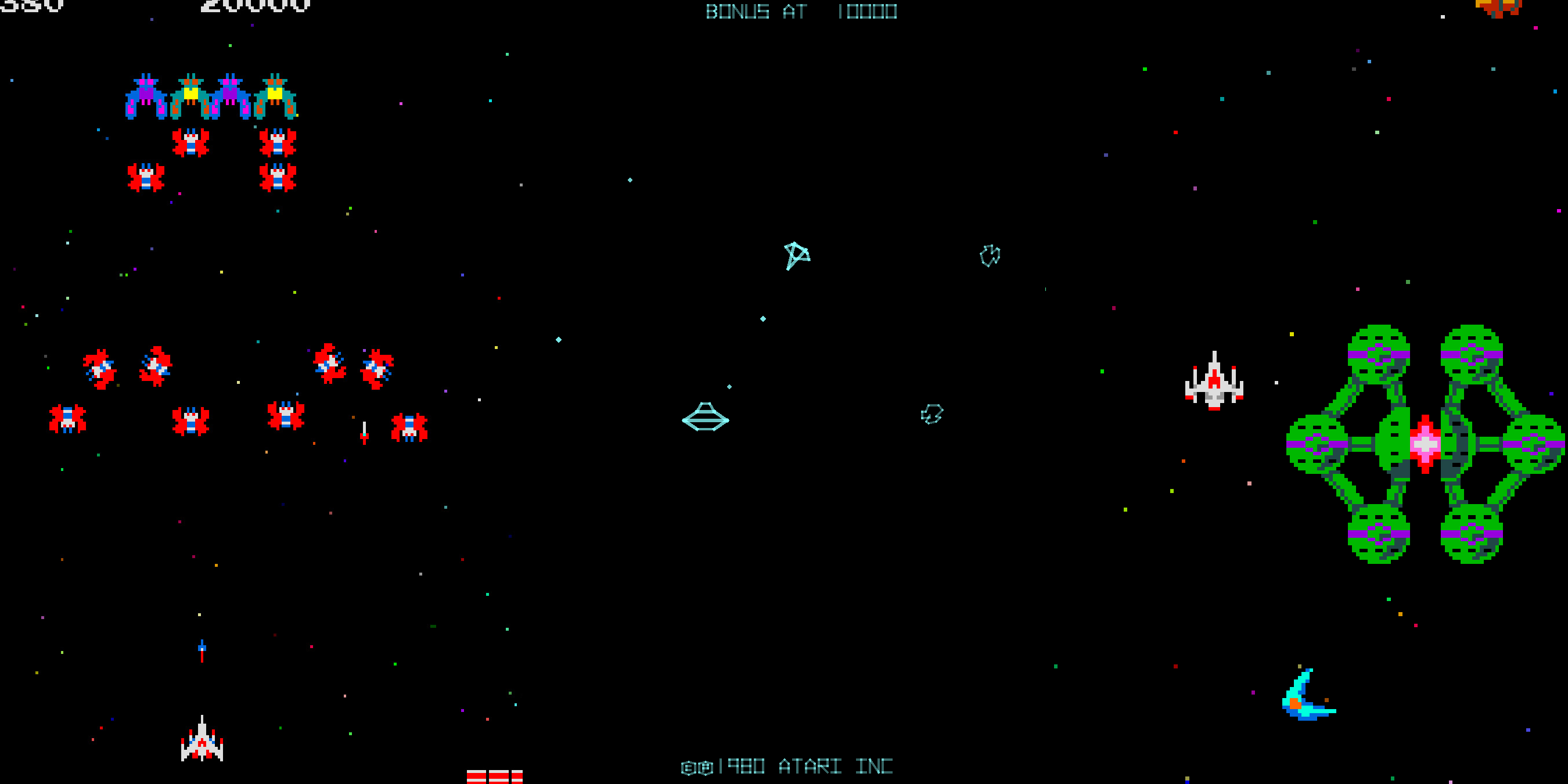Introduction
Before the era of fighters, racers, and rhythm games, arcades were ruled by starscapes, laser blasts, and alien armadas. From Space Invaders to Ikaruga, space shooters shaped the golden age of coin-op gaming with twitch reflexes, hypnotic patterns, and addictive score-chasing.
This article explores the complete history of space shooter arcade games—a genre that began with simple pixel ships and evolved into dizzying displays of technical and mechanical brilliance. Along the way, it answers the key questions players still ask today: What made space shooters so popular? Why did they decline? And why do so many still hold up decades later?
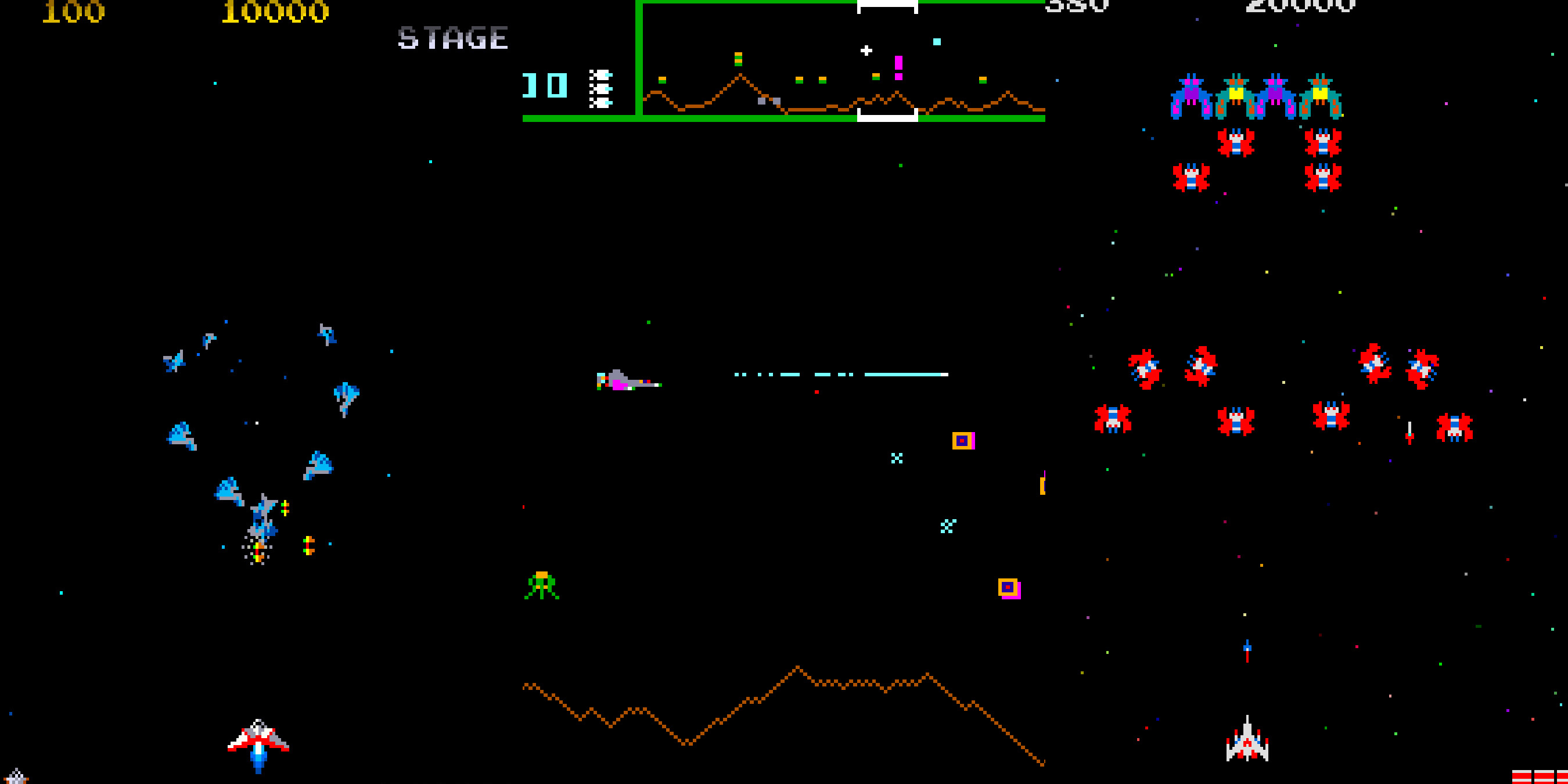
Origins: The Birth of the Genre
The space shooter’s story begins with Taito’s Space Invaders (1978). Designed by Tomohiro Nishikado, it was the first game to feature descending alien formations, escalating difficulty, and real-time player reaction.
While earlier games like Spacewar! (1962) and Space Wars (1977) featured outer space settings and shooting mechanics, it was Space Invaders that resonated both commercially and culturally. Its success established the core identity of the space shooter genre and ignited the arcade explosion of the late 1970s and early 1980s.
As Nishikado recalled in a later interview:
“When I was little, War of the Worlds by author H.G. Wells was very popular... I’d look up at the night sky and wonder whether aliens may come and attack us. That’s why we used octopuses as the biggest enemies in Space Invaders.”
— Tomohiro Nishikado, High Score, Netflix
- Introduced score-chasing mechanics
- Inspired massive arcade cabinet production booms
- Sparked a global craze that made headlines
Space Invaders was followed closely by Atari’s Asteroids (1979), which used vector graphics and physics-based inertia—setting a new standard for space-themed arcade combat. Together, these two laid the foundation for the genre’s visual style, pacing, and challenge level.

The Golden Age (1980s): Starfields, Scrolls, and Spacecraft
The 1980s saw an explosion of space shooter innovations, both vertically and horizontally scrolling. Developers pushed hardware limits to create faster action, more enemies, and complex patterns.
Key Titles:
- Galaxian (1979) – Introduced color sprites and diving enemies
- Defender (1981) – Scrolling screen with radar and enemy rescue mechanics
- Galaga (1981) – Added tractor beams, enemy formations, and dual-ship play
- Xevious (1982) – Though not a space shooter, its layered air/ground mechanics influenced the genre's evolution
- Gradius (1985) – Power-up selection system and strategic level design
- R-Type (1987) – Introduced charge shots and the indestructible “Force” pod
Each game brought unique elements:
- Galaga introduced enemy AI behavior.
- Defender was one of the first to feature multiple input controls and a radar.
- Gradius introduced player agency in how you evolved your ship.
The genre became a default template for arcade developers, producing dozens of hits annually.
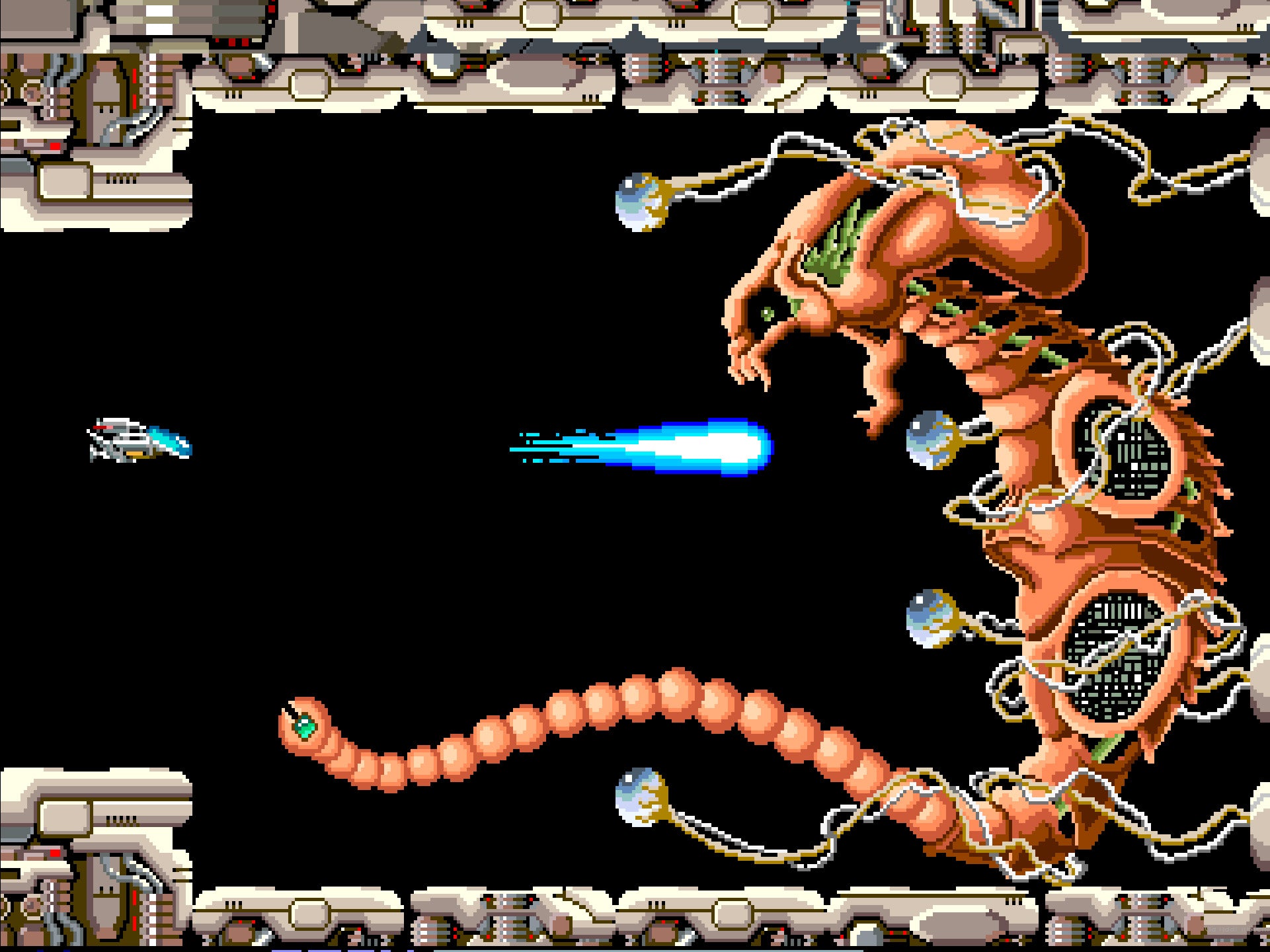
Subgenres Within Space Shooters
As hardware advanced, space shooters branched into distinct styles:
Vertical Space Shooters:
Horizontal Space Shooters:
- Focused on enemy choreography and navigating alien structures or fleets.
- Notables: Gradius, R-Type, Darius
Rail Shooters:
- Players followed a pre-set “rail” while aiming freely.
- Notables: After Burner, Starblade, Galaxy Force II
Multidirectional Space Shooters:
This diversification allowed for massive creativity within the genre, while still retaining the core of tight control, endless waves, and high-score tension.
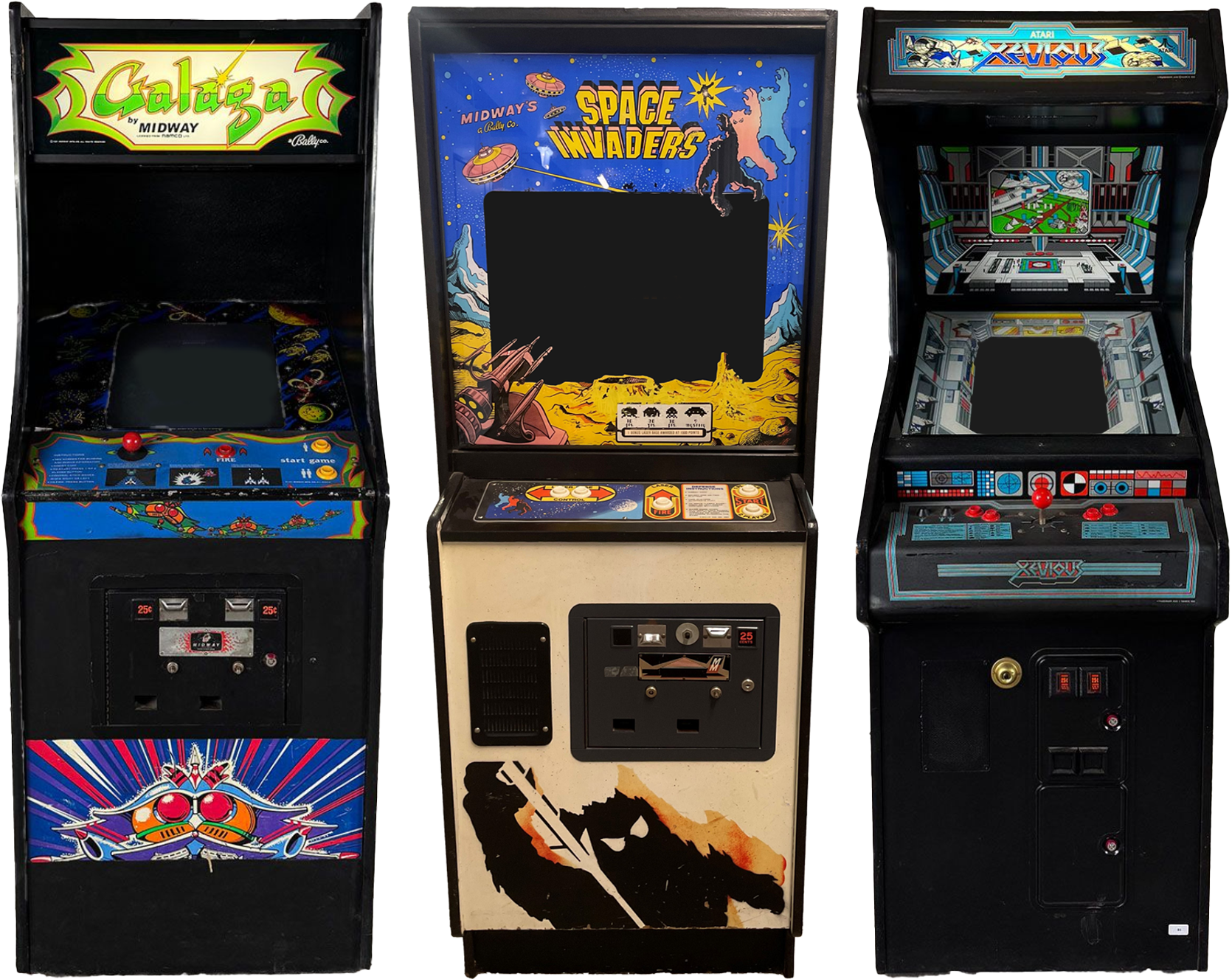
Space-Themed Bullet Hell: Precision Shooting in the Cosmos (1990s–2000s)
While Western arcades began to shift toward fighters and racers, Japanese developers doubled down on making space shooters more intense. Enter: Bullet Hell.
Key Developers:
These space-themed shooters ramped up the action with:
- Hundreds of bullets on-screen
- Precision dodging through narrow hitboxes
- Sci-fi environments and spacecraft designs
Ikaruga (2001), developed by Treasure, added polarity-switching mechanics. Players absorbed bullets of the same color while being vulnerable to the opposite—blending puzzle logic with twitch reflexes. Its minimalism and polarity system made it one of the most iconic modern space shooters.
Bullet hell games pushed the genre to extremes—favoring mastery, memorization, and mechanical skill.
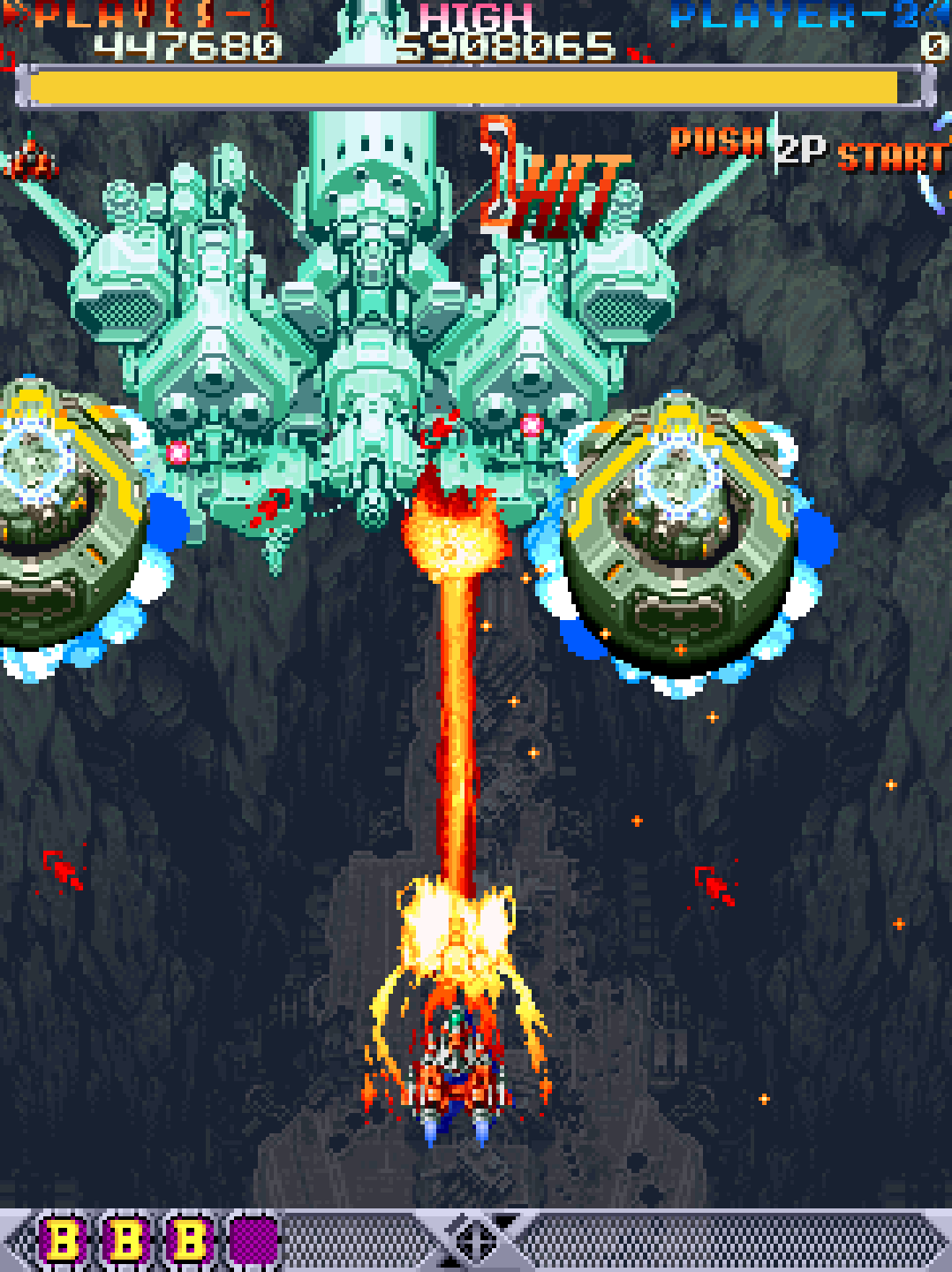
Hardware and Visual Evolution
Space shooters have always been tied to arcade hardware innovation:
- Sprite scaling and parallax scrolling in the late 80s gave depth and speed.
- Vector graphics (Asteroids, Star Wars) enabled precision movement.
- LaserDisc integration (e.g., Interstellar) flirted with full-motion video.
- Custom PCBs allowed Japanese devs to control sprite density and bullet behavior.
These innovations made the genre a showcase for what arcades could do visually—even before 3D graphics arrived.
Why Space Shooters Dominated Arcades in the 80s and 90s
- Fast Sessions: Easy to play in under 2 minutes, perfect for coin-op.
- Hardware-Friendly Aesthetic: Early arcade machines struggled with rendering complex environments. Space shooters took advantage of black backgrounds—not only to simulate space but to reduce graphical strain. The contrast made lasers and ships pop visually, especially in dim arcade lighting.
- High Skill Ceiling: Encouraged repeat plays and mastery.
- Visual Feedback: Explosions, flashing bullets, and scrolling backgrounds popped in dark arcade rooms.
- Score Chasing: Ideal for leaderboards and local bragging rights.
The formula was simple to learn but hard to master—making it a magnet for both casual and competitive players.
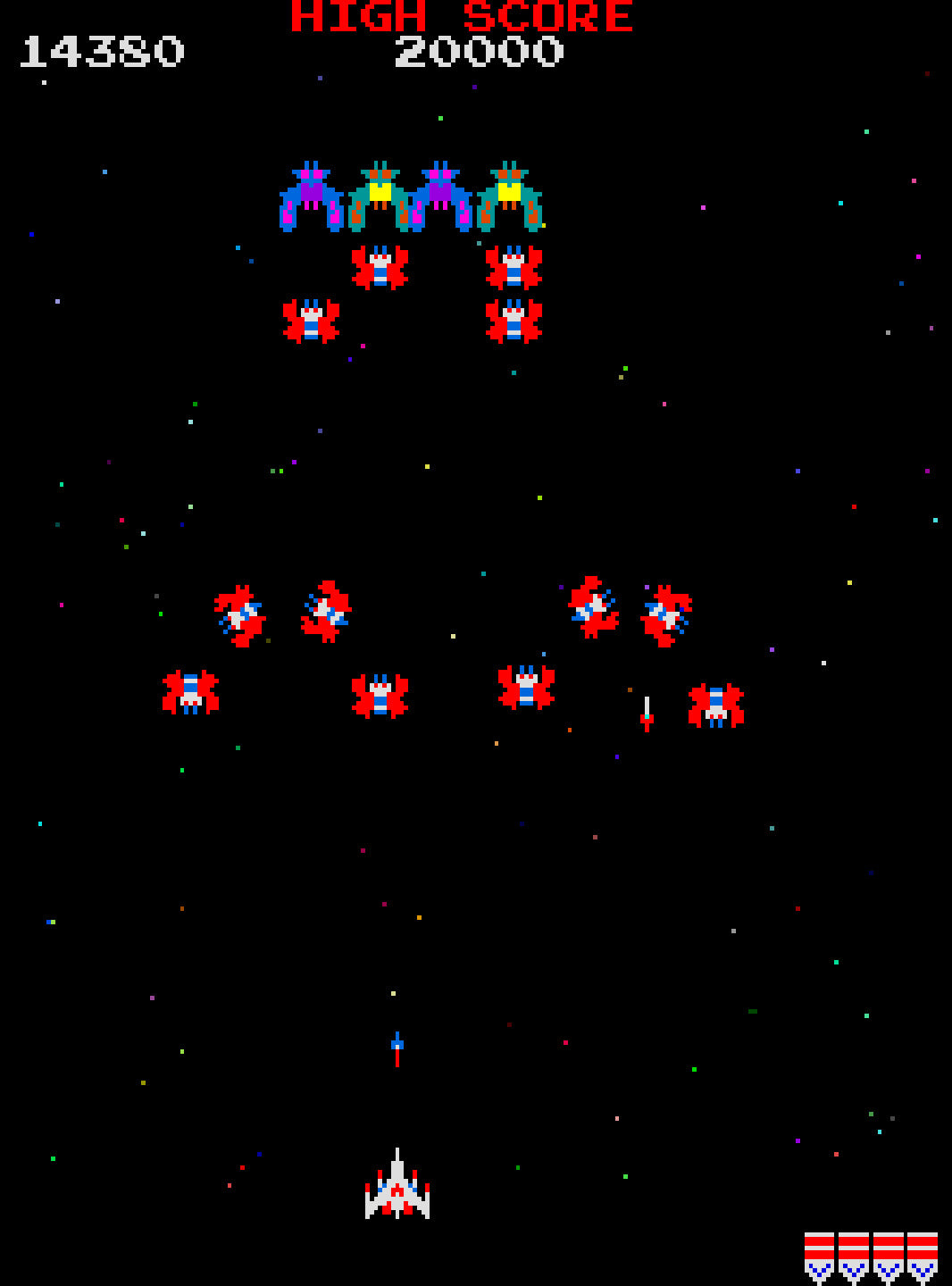
Decline in the West: Why They Faded
By the mid-1990s, space shooters started disappearing from U.S. arcades. Why?
- Fighting games (Street Fighter II, Mortal Kombat) took over floor space.
- Home consoles offered longer-form sci-fi games (like Star Fox, Descent, Einhänder).
- The general public grew tired of 2D patterns and repetition.
While bullet hell thrived in Japan, in the West, the genre became a niche collector and enthusiast scene.
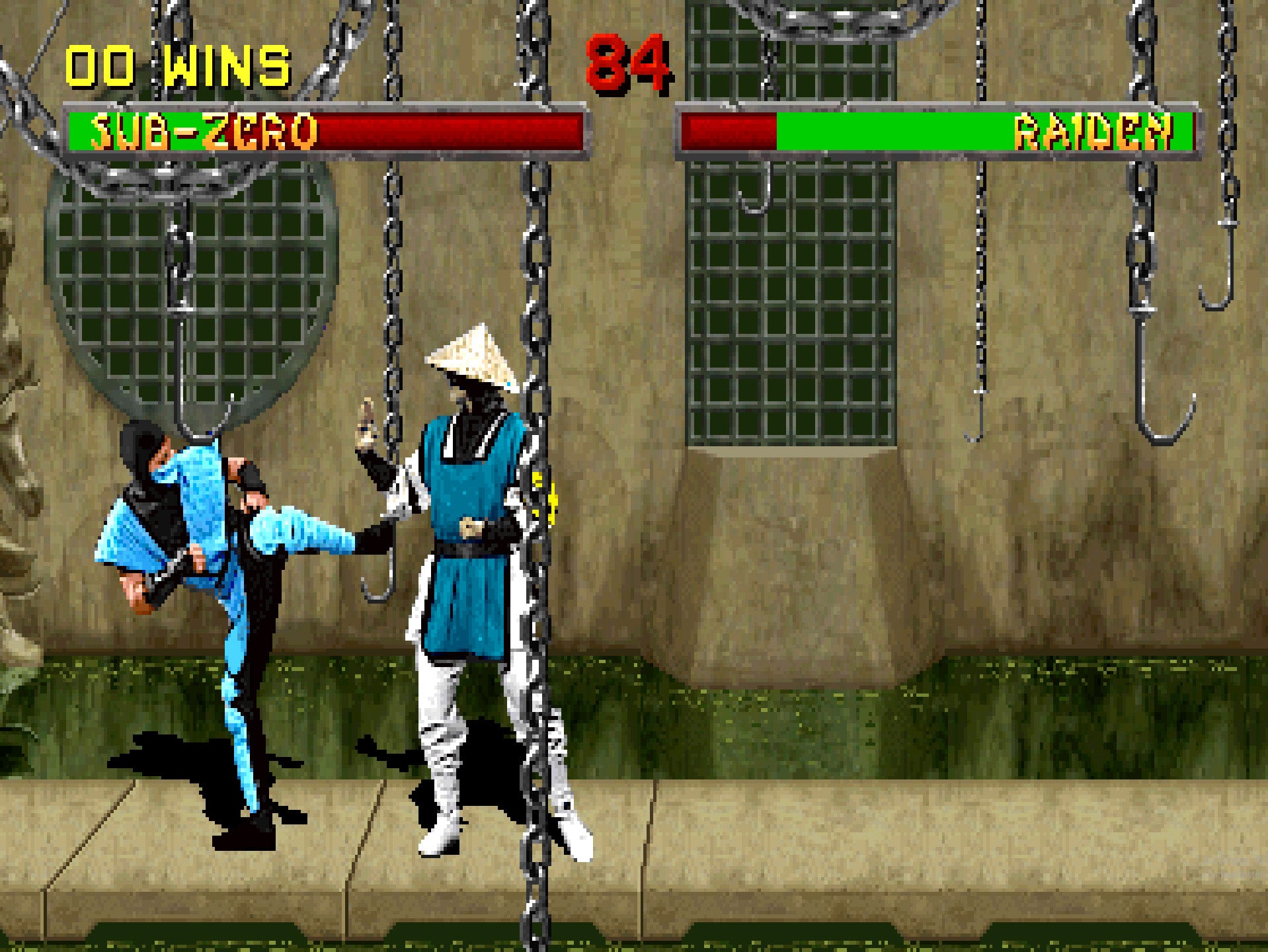
Lasting Legacy and Modern Resurgence
Today, space shooters are no longer arcade headliners—but their DNA is everywhere:
- Indie games like Sky Force Reloaded, Jets ’n’ Guns, and Steredenn pay tribute.
- Mobile adaptations bring simplified vertical shooters to touch screens.
- Games like Returnal and Nier: Automata blend shmup mechanics into modern 3D design.
- Competitions and Twitch communities keep score-chasing alive.
Even the aesthetic—pixel starscapes, neon lasers, alien fleets—continues to inspire modern design.
The Best Space Shooter Arcade Games of All Time
While taste varies, the following are widely considered genre-defining classics:
- Space Invaders (1978)
- Asteroids (1979)
- Defender (1981)
- Galaga (1981)
- Xevious (1982)
- Gradius (1985)
- R-Type (1987)
- Raiden (1990)
- DoDonPachi (1997)
- Ikaruga (2001)
Each advanced the genre in mechanics, visuals, or popularity—and many are still emulated or played competitively today.
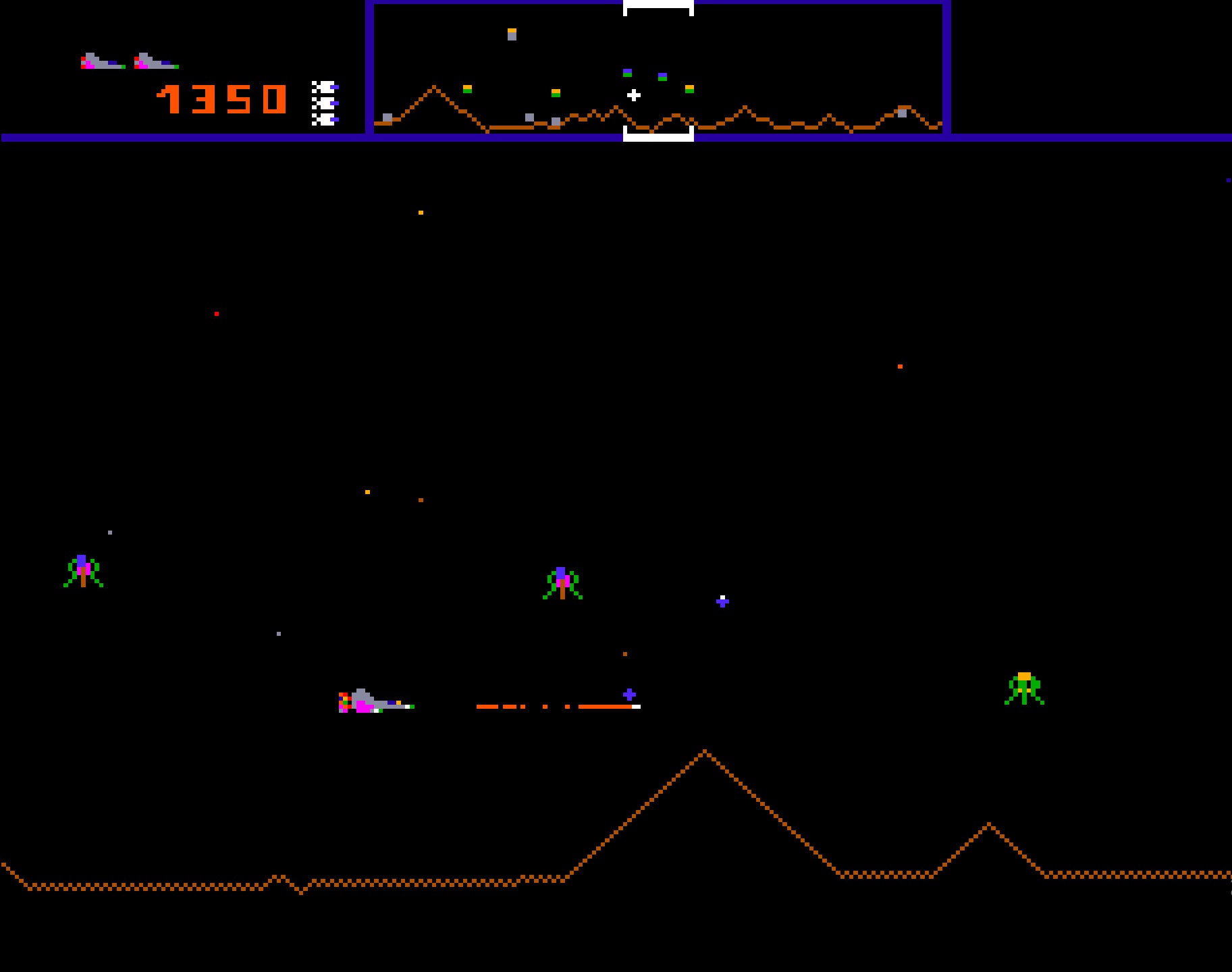
Why Space Shooters Still Matter
In an era of open-world games and cinematic blockbusters, space shooters remind us of what gaming was—and can still be:
- Precision-driven challenge
- Pure gameplay feedback loops
- Visual clarity with escalating intensity
Their influence is embedded in dozens of genres, from modern roguelikes to twin-stick shooters. And for arcade historians, they represent the genre that most embodied the coin-op ideal: fast, flashy, and fiercely addictive.
Sources & Further Reading
- High Score, Episode 1 – Netflix Documentary (2020)
- Kent, Steven L. – The Ultimate History of Video Games, page 464
- Lendino, Jamie – Attract Mode
- From Pinballs to Pixels - Ken Horowitz
- Electronic Games Magazine (Winter Issue 1981), (Issue March 1982) (Issue January 1983), (Issue January 1984)
Related Pages
- What Makes an Arcade Game Great? – A deep dive into the design principles behind the most unforgettable cabinets of all time
- Inside the Metal Slug Legacy: The Developers Who Made It a Classic – How a small team at Nazca crafted one of the most iconic run-and-gun series of all time..
- The Complete History of Mortal Kombat Arcade – How a gritty fighter became a pop culture phenomenon.
- Capcom’s 19XX Series: The Complete History – The vertical shooters that defined a generation of arcade firepower.
- The History of Beat ’Em Up Arcade Games – From Double Dragon to Final Fight, here’s how brawlers ruled the late ’80s.

